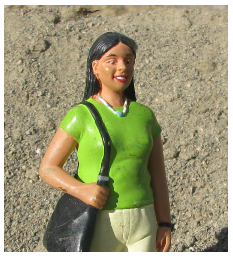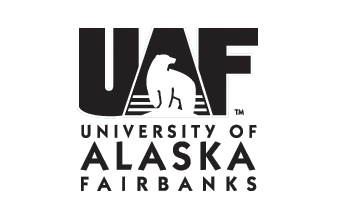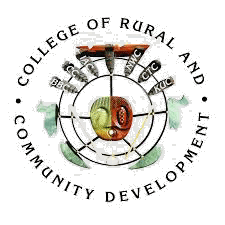
Lesson Overview and Goals
This lesson will focus on understanding your audience and the traditions of formal and informal interactions. By the end of Lesson 1, you should be able to
- greet and introduce yourself and your friend/relative to others,
- recognize and choose an Unangax̂ name;
- understand the structure of basic nouns and recognize them
Instructions
Read and review each of the following sections. Click each to expand for more information. After you have finished studying each section, complete the Lesson 1 Assignment.
Vocabulary
 Tunun / Vocabulary
Tunun / Vocabulary
Listen to the vocabulary words and helpful phrases – Sound Lab Lesson 1 Tracks 1-2. Work on learning the words by sound and by sight. See also the vocabulary flip cards in the ‘Test Your Knowledge’ section.
If the audio above doesn’t play, download the .mp3 file
| tayaĝux̂‚ | man |
| ayagax̂‚ | woman |
| adax̂‚, adaadax̂‚ | father |
| anax̂‚, anaadax̂‚ | mother |
| braatax̂‚ | brother |
| sistrax̂‚ | sister |
| ilaasix̂‚[1] | friend |
| waya | this [is], here [is] |
| wan | this |
| inga(ya) | this, this one right here |
| ingan | this, that |
| kiin | who |
| asax̂‚talix | to have as a name, to be called |
| ix̂‚am(a)nalix | to be good |
| alix | to be, to exist |
[1] ilaasax̂‚ in Bergsland (1994).
Helpful Phrases
If the audio above doesn’t play, download the .mp3 file
| Aang aang (=Aang) | Hello |
| Ukid(i)gilix[1] | Good-bye |
| Qaĝaalakux̂‚ | Thanks |
| Altxin? | and you? |
| Alqutax̂‚ asax̂‚tatxin? Kiin asax̂‚tatxin?Alqutax̂‚ asax̂‚taltxin? Kiin asax̂‚taltxin? | What is your name / What are you called? |
| Alqutax̂‚ asax̂‚talix? Kiin asax̂‚talix? | What is his/her name / What is he/she called? |
| Kiin txin? | Who are you? |
| Kiin alix? | Who is he/she/it? |
| Kiin ingay(a)? | Who is this one? |
| Aslixsxaan ix̂‚am(a)nakux̂‚ | It’s nice to meet you |
[1] ukudigalix in Bergsland (1994).
Vocabulary Notes
- In the Pribilof Islands, you will more usually hear the terms of endearment anaadax̂‚ ‘mother’ (literally ‘dear, little mother’) or adaadax̂‚ ‘father’ (literally ‘dear, little father’). The words anax̂‚ ‘mother’ and adax̂‚ ‘father’ are usually considered overly formal in casual conversations about one’s parents. .
- The words inga(ya) and ingan are ambiguous. Originally, there were two separate demonstrative words: ingan ‘that one right there,’ from inga ‘right there, in front, a little farther away than something or someone referenced by wan ‘this one’;’ and hingan ‘there, close to the person spoken to, in reference to something just mentioned.’ Hingan is in contrast with wan. Both are now pronounced inga in Eastern Unangam TUnuu. Both, given the right context, can be translated as either ‘this’ or ‘that,’ as long as it is understood that something is close with reference to the speaker.
- The verb asax̂‚tatxin is formally transitive, and literally means ‘you have X as a name;’ thus Alqutax̂‚ asax̂‚tatxin literally means ‘What do you have as a name?’ We provide the colloquial English translation ‘What are you called, what is your name?’
Dialectal variation
Many words are pronounced differently by different speakers. In St. George, for example, many speakers will say tayuĝux̂‚, whereas Unalaskans would say tayaĝux̂‚. Some speakers may say ukidigilix, others ukudigilix, and still others ukudigalix; the latter is a variant more often found on the Aleutian Chain (and is closer to the original pronunciation of the word). You may also hear variations by the same speaker at different times. Likewise, words listed one way in Bergsland (1994) may be pronounced differently or have a slightly different derivation when used by different speakers. The word ilaasax̂‚ ‘relative, friend’ in Bergsland (1994:193) is almost always ilaasix̂‚ in the recordings you will find in this course.
Expand your vocabulary
Once you have mastered the vocabulary given in this lesson, learn the following additional vocabulary, for the purposes of the exercises. The words can be found in the Lexicon at the end of the textbook:
uncle, aunt, cousin, grandfather, grandmother, grandchild, nephew, niece, wife, husband, son, daughter, baby.
Practice saying them. They will be used in the exercises in the rest of this lesson.
Pronunciation
 Pronunciation – difficult sounds.
Pronunciation – difficult sounds.
Listen to Lesson 1 Tracks 3-4 on the textbook Sound Lab or below.
If the audio above doesn’t play, download the .mp3 file
If the audio above doesn’t play, download the .mp3 file
A number of sounds in Unangam Tunuu are not found in English. In the next few lessons, we will focus on particular sounds that may be difficult for you to pronounce. In this lesson, we focus on the sound [x̂‚].
You will also see some words are regularly written with letters in parentheses or with an apostrophe in these lessons. The pronunciation of a word often depends on its stress pattern in combination with its suffixes and endings. In some forms, a sound may not be pronounced:
Ix̂‚amanakux̂‚. Ix̂‚am’nakux̂‚. ‘He/she/it is fine.’
Ukidigilix! Ukid’gilix! ‘Good-bye!’
The full word includes the sound in parentheses: ix̂‚amanakux̂‚, ukidigilix. It is important to know the full form, because a sound that is missing in one spoken form may reappear in another form, depending on the stress pattern, or the syllables or the endings which follow. Here is an example from Lesson 3:
| Maqaĝil(a)kaqing. Maqaĝil’kaqing. | ‘I am all right, I am fine.’ |
| Maqaĝilakax̂‚. | ‘He/she/it is all right; He/she/it is fine.’ |
In Eastern Unangam Tunuu, and especially in the Pribilof Islands dialect, the full form of some words are almost never pronounced, except in careful, deliberate speech.
 Oral exercises
Oral exercises
- Practice saying the words with the sounds in parentheses. Begin by pronouncing the full form of the word, and then say the colloquial form. Use the voice recorder and listen to yourself:
- maqaĝilakaqing – maqaĝil(a)kaqing
- ukidigilix – ukid(i)gilix
- ix̂‚amanakux̂‚ – ix̂‚am(a)nakux̂‚
- ingan ayagax̂‚ – ing(an) ayagax̂‚
- Practice saying the following pairs of words, taking care to differentiate between final [x] and final [x̂‚]. You can record and play yourself back to see how you sound using the recording tool below.
- asax̂‚talix – asax̂‚takux̂‚
- ix̂‚am(a)nalix – ix̂‚am(a)nakux̂‚
- alix – akux̂‚
Culture Notes 1: Unangan First Names
Before the Russians came to the Aleutians, of course, Unangan names were based on Unangan words (cf. Bergsland 1998 for a detailed study of pre-Russian contact Unangan names). Today, most Unangan have names that come from either the Russian Orthodox tradition or from names common in the American English tradition–but when said in Unangam Tunuu, they are pronounced differently, and they have Unangan endings. The most common ending is —x̂‚, because names are like nouns:
- Paul = Paavilax̂‚, Puulix̂‚
- Mary = Mariiyax̂‚
- George = Giuurgiiyax̂‚
However, in everyday speech, many times these endings are left out: Paavil, Nadiisda, and so forth. Some names end in vowels, as in Nina and Ulga.
Other sounds might be different too. For example, the [au] sound in ‘Paul’ is not a sound that is used in Unangam Tunuu, so either the Russian-based Paavilax̂‚ is used (from Russian Pavel) or the English-based Puulix̂‚ is used (from English Paul).
Just like nicknames in English are used to show familiarity or affection (‘Jenny’ rather than Jennifer, or ‘Jimmy’ rather than James), there are ways of showing endearment by adding something to Unangan names. One common addition is the diminutive suffix —ada-: Paavila-ada-x̂‚ = Paavilaadax̂‚. Another suffix is —kucha-: Paavil(a)-kucha- (Notice these endings added after the name and before the —x̂‚ ending.)
 Self- Study Listening & Conversation Exercises
Self- Study Listening & Conversation Exercises
Complete the following exercises to get more practice.
- Listen to the Unangan names and practice saying them (Sound Lab Lesson 1 Track4)
If the audio above doesn’t play, download the .mp3 file - Listen to an Unangax̂‚ Elder discuss variations on his name (Sound Lab Lesson 1 Track 5)
If the audio above doesn’t play, download the .mp3 file - Find out if your name has an Unangax̂‚ equivalent (either by doing independent research, by asking others in the class*, by asking an Elder, etc.) *Use the Discussion Area to ask questions.
- (Written exercises are in the ‘Test Your Knowledge’ section.)
Culture Notes 2: Greetings
Greetings are relatively modern, having been adopted from Russian and English customs. The general greeting for ‘hello’ is either Aang aang or simply Aang, from the word aang ‘yes.’ The general greeting for ‘good-bye’ (i.e. leave-taking) is Ukid’gilix, from the word ukudiga- ‘to be healthy, successful, have good luck’ (originally from the root uku- ‘to see, look, find, get’).
A greeting can of course be specific to the time of the day: in the morning, one may say Qilam ix̂‚am’naa! ‘good morning!’ or simply qilax̂‚! ‘morning!’ In the afternoon, one may say Qam agalaa! ‘Good afternoon!’ (literally ‘after the meal!’). In the evening, one may say Angal’kingam ix̂‚am’naa! ‘Good evening!’ or simply angal’kingax̂‚! ‘evening!’
 Self-Study Oral Exercises
Self-Study Oral Exercises
Look at the photos of various ‘people’ and practice greeting them appropriately
- Mary; day
- Paul; morning
- Susan; evening
- Constantine; hello
Culture Notes 3: Saying Thank You
The root qaĝ‚a– ‘to be glad’ serves as the basis for saying ‘thank you.’ There are several different ways of expressing thanks, as in the following:
- (Txin) qaĝ‚aalakux̂‚Ì‚ ‘thanks’ (this is particularly common in the Pribilof Islands, and literally means ‘(you) are thanked’)
- Txin qaĝ‚Ì‚aasakuqing ‘I thank you’ (this is more commonly heard on the Aleutian Chain)
Grammar 1 - Nouns: Some Basic Noun Endings
1. The —x̂‚ ending on Unangan nouns
Look at the following nouns, or words for people, places, things, or ideas:
- tayaĝux̂‚ – ‘man’
- ayagax̂‚- ‘woman’
- braatax̂‚- ‘brother’
- sistrax̂‚- ‘sister’
- Mariiyax̂‚- ‘Mary’
- Paavilax̂‚- ‘Paul’
In their simplest form, nouns in Unangam Tunuu end in —x̂‚.
2. The —ng ending on Unangan nouns
Look at the following words:
- braatang – ‘my brother’
- sistrang – ‘my sister’
- adang – ‘my father’
- ilaasing – ‘my friend’
In Unangam Tunuu, the noun ending —ng means ‘my’.
The ending —ng is known as a first person possessive ending. The speaker always refers to him or herself as ‘I,’ ‘me,’ ‘myself,’ and so forth: this is known as the ‘first person.’ Words or endings can show a possessive relationship between two or more things: the person or thing who possesses something is known as the possessor; the person or thing possessed is known as the possessed, or possessum. For example, in the phrase ‘my brother,’ ‘I’ am the possessor, and ‘brother’ is the possessed. In the phrase ‘Mary’s father,’ ‘Mary’ is the possessor, and ‘father’ is the possessed.
Some words change meaning when they are possessed. For example, the simple word ayagax̂‚ means ‘woman;’ but when it is possessed, it means ‘wife,’ as in ayagang ‘my wife.’
3. The diminutive suffix —ada- on nouns
As we saw above, the suffix —ada- is added to names to express endearment:
- Paavilax̂‚ – ‘Paul’
- Paav(i)laadax̂‚ – ‘dear little Paul’
This suffix is known as a diminutive suffix: it suggests that the noun is smaller, cuter, or dearer than the bare noun. It can also be attached to other nouns:
- ayagax̂‚ – ‘woman’
- ayagaadax̂‚ – ‘girl’ (= ‘dear little woman’)
It is the same suffix that is found in the most common words for ‘mother’ and ‘father’:
- adax̂‚ – ‘father’
- adaadax̂‚ – ‘father’ (= ‘dear father’)
- anax̂‚ – ‘mother’
- anaadax̂‚ – ‘mother’ (= ‘dear mother’)
For now, we will just look at diminutives in names; in future lessons, we will see the diminutive in other nouns and in verbs. As with possession, the addition of a diminutive suffix can change the inherent meaning of a word, as when the diminutive —ada- is added to ayagax̂‚Ì‚, forming the noun ayagaadax̂‚ ‘girl’
We also saw another diminutive —kucha- in names. This has a slightly different meaning and is less widely applicable. We will not focus on this suffix for now.
Grammar 2: Question words kiin and alqutax̂‚
Simple introductions with the question words kiin ‘who’ and alqutax̂‚ ‘what’
Simple questions such as ‘who are you?’ or ‘who is this?’ may be formed just with the question word kiin ‘who’ and a pronoun, a word such as ‘I,’ ‘you,’ ‘this’ which stands in place of a full noun. Notice that there is no word for ‘are’ or ‘is’:
- Kiin txin? – ‘Who are you?’
- Kiin way(a)? Kiin ingay(a)?- ‘Who is this?’
(the difference between way(a) and ingay(a) is subtle and has to do with the perspective of the speaker and hearer; for now, both can be translated as ‘this’)
- Alqutax̂‚ ingay(a) – ‘What is this?’
Because there is no pronoun meaning ‘he,’ ‘she,’ or ‘it’ in Unangam Tunuu, there is a different way of asking ‘who is he, she, it?’ The word alix means ‘to be;’ in the following example, it is translated as ‘is’:
- Kiin alix? – ‘Who is he, she, it?’
- Alqutax̂‚ alix? – ‘What is it?’
Notice that direct translations from one language to the other are not always very helpful. It is more important to learn the phrases and how they are used than their grammatical structure at this point.
Notice also that ‘this’ shows up as way(a) or inga(ya) when it is used as a noun, as in kiin way(a)? kiin inga(ya)? ‘who is this?’ and as wan or ingan when it modifies a noun, as in wan ayagax̂‚ ‘this woman’ or ingan tayaĝux̂‚ ‘this man.’
Test Your Knowledge
Understanding Conversations
Watch the videos below and try to translate the conversations. What would you say differently?
 Self-Study Written Exercises
Self-Study Written Exercises
Written exercises (Lesson 1 Self-Study Exercises – will open in a new tab in a Google Doc.)
Study Cards – Vocabulary
[qdeck] [q]tayaĝux̂‚[a]man
[q]ayagax̂‚
[a]woman
[q]adax̂‚, adaadax̂‚
[a]father
[q]anax̂‚, anaadax̂‚
[a]mother
[q]braatax̂‚
[a]brother
[q]sistrax̂‚
[a]sister
[q]ilaasix̂‚
[a]friend
[q]waya
[a]this [is], here [is] [q]wan
[a]this
[q]inga(ya)
[a]this, this one right here
[q]ingan
[a]this, that
[q]kiin
[a]who
[q]asax̂‚talix
[a]to have as a name, to be called
[q]ix̂‚am(a)nalix
[a]to be good
[q]alix
[a]to be, to exist
[q]man
[a]tayaĝux̂‚
[q]woman
[a]ayagax̂‚
[q]father
[a]adax̂‚, adaadax̂‚
[q]mother
[a]anax̂‚, anaadax̂‚
[q]brother
[a]braatax̂‚
[q]sister
[a]sistrax̂‚
[q]friend
[a]ilaasix̂‚
[q]this [is], here [is] [a]waya
[q]this
[a]wan
[q]this, this one right here
[a]inga(ya)
[q]this, that
[a]ingan
[q]who
[a]kiin
[q]to have as a name, to be called
[a]asax̂‚talix
[q]to be good
[a]ix̂‚am(a)nalix
[q]to be, to exist
[a]alix
[/qdeck]
Study Cards – Phrases
[qdeck] [q]Aang aang (=Aang)[a]Hello
[q]Ukid(i)gilix
[a]Good-bye
[q]Qaĝaalakux̂‚
[a]Thanks
[q]Altxin?
[a]and you?
[q]Alqutax̂‚ asax̂‚tatxin? Kiin asax̂‚tatxin?Alqutax̂‚ asax̂‚taltxin? Kiin asax̂‚taltxin?
[a]What is your name / What are you called?
[q]Alqutax̂‚ asax̂‚talix? Kiin asax̂‚talix?
[a]What is his/her name / What is he/she called?
[q]Kiin txin?
[a]Who are you?
[q]Kiin alix?
[a]Who is he/she/it?
[q]Kiin ingay(a)?
[a]Who is this one?
[q]Aslixsxaan ix̂‚am(a)nakux̂‚
[a]It’s nice to meet you
[q]Hello
[a]Aang aang (=Aang)
[q]Good-bye
[a]Ukid(i)gilix
[q]Thanks
[a]Qaĝaalakux̂‚
[q]and you?
[a]Altxin?
[q]What is your name / What are you called?
[a]Alqutax̂‚ asax̂‚tatxin? Kiin asax̂‚tatxin?Alqutax̂‚ asax̂‚taltxin? Kiin asax̂‚taltxin?
[q]What is his/her name / What is he/she called?
[a]Alqutax̂‚ asax̂‚talix? Kiin asax̂‚talix?
[q]Who are you?
[a]Kiin txin?
[q]Who is he/she/it?
[a]Kiin alix?
[q]Who is this one?
[a]Kiin ingay(a)?
[q]It’s nice to meet you
[a]Aslixsxaan ix̂‚am(a)nakux̂‚
[/qdeck]
Test your listening comprehension
Listen to the conversation and answer the questions that follow for yourself:
 Tunusax̂‚ / Conversation
Tunusax̂‚ / Conversation
Listen to Sound Lab Lesson 1 Track 15
If the audio above doesn’t play, download the .mp3 file
- P–Aang aang, alqutax̂‚ asax̂‚taltxin?
- M–Mariiyax̂‚ asax̂‚takuqing. Altxin?
- P–Paavilax̂‚ akuqing.
- M–Aslixsxaan ix̂‚am(a)nakux̂‚.
- P–Qaĝaalakux̂‚. Kiin ingaya?
- M–Paavilax̂‚-ah, waya braatang Giyuurgiiyax̂‚.
- P–Aang aang Giyuurgiiyax̂‚, aslixsxaan ix̂‚am(a)nakux̂‚. Paavilax̂‚ asax̂‚takuqing.
- G–Aslixsxaan ix̂‚am(a)nakux̂‚.
- P–Qaĝaalakux̂‚.
- M–Ukid(i)gilix!
- P– Txin kayux, Mariiyax̂‚! Aslaan-ilix txin ukux̂‚taduukuqing![1]
[1] Txin kayux ‘you too’ Aslaan-ilix txin ukux̂‚taduukuqing ‘I’ll see you again’.
Tunux̂‚tam malgaa / Conversation exercises
Answer the following questions with full sentences based on the conversation above:
- Ayagax̂‚ Mariiyax̂‚ asax̂‚talix eh?
- Paavilax̂‚ tayaĝux̂‚ alix eh?
- Giyuurgiiyax̂‚ tayaĝux̂‚ alix eh?
In-Class Group Exercises
![]()
Group Conversation Exercises
These exercises will be completed during synchronous class time and led by your instructor. You will be graded on attendance and participation.
1. Come to class this week knowing your Unangan name. Take turns introducing yourselves during class time to each other.
2. Take turns reading aloud the Tunusax̂‚ / Conversation from the ‘Test Yourself’ section of this lesson. Discuss the Tunux̂‚tam malgaa questions as a group.
3. Discuss the videos from the ‘Test Your Knowledge’ section. Were you able to understand the conversation?
Lesson Assignment
Download the Lesson 1 Assignment file (Google Doc: open and then download file as doc or save to your Google Drive) , complete, and upload the file to the Assignment Upload area for Lesson 1 in the UAF Blackboard course shell (https://classes.uaf.edu – log in with your UA username and password).
If you have problems with the assignment or with uploading the file, please contact your instructor right away for help.





